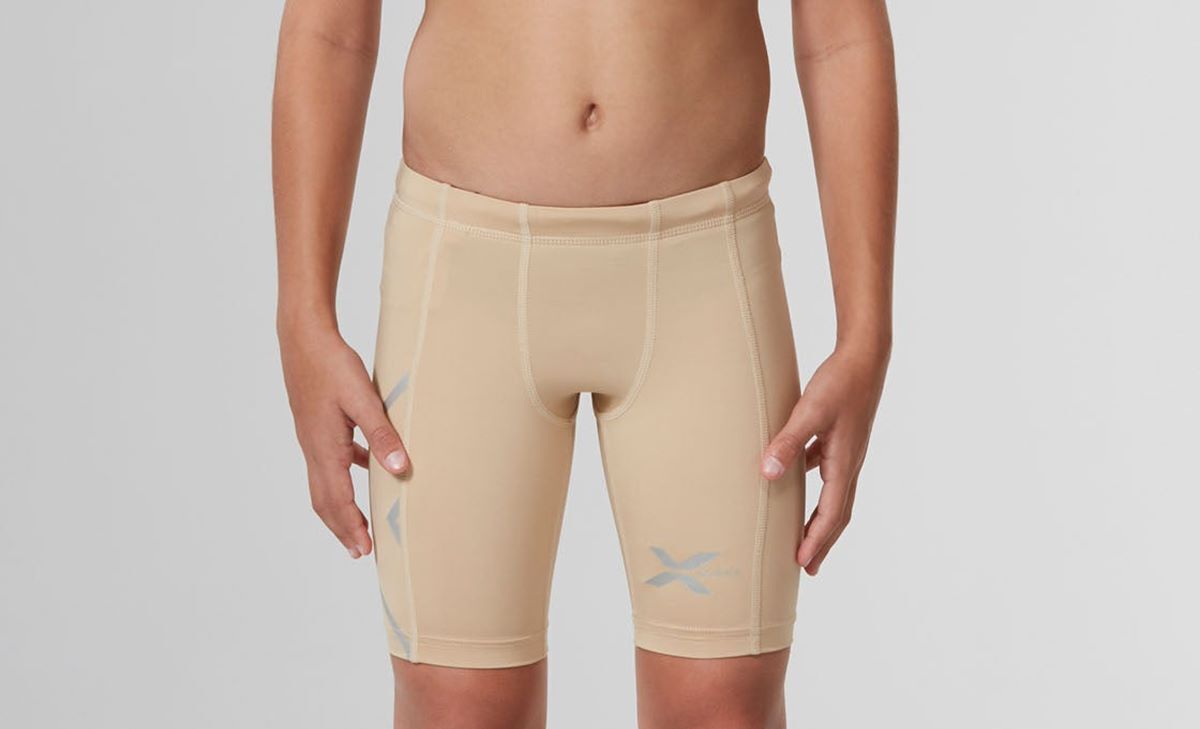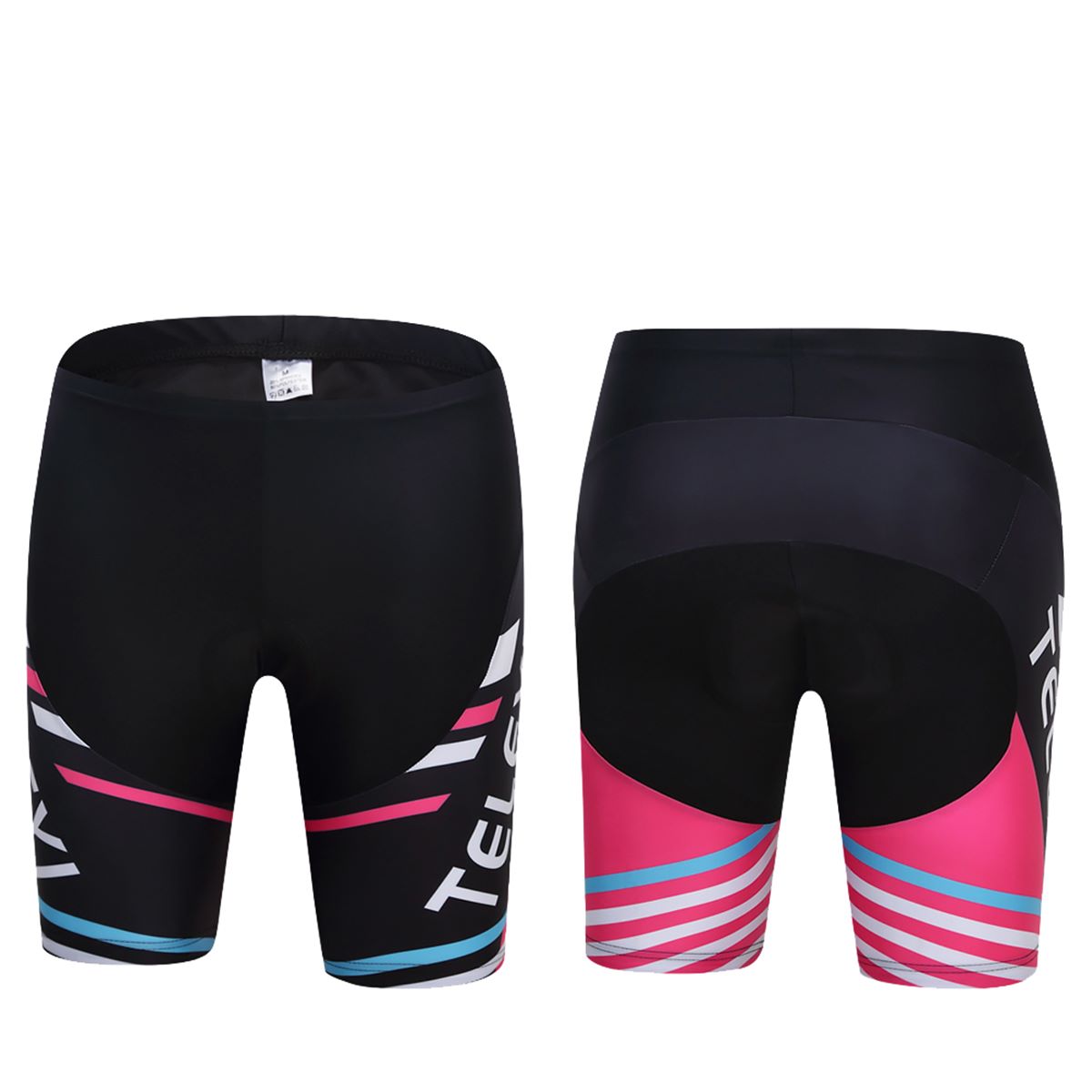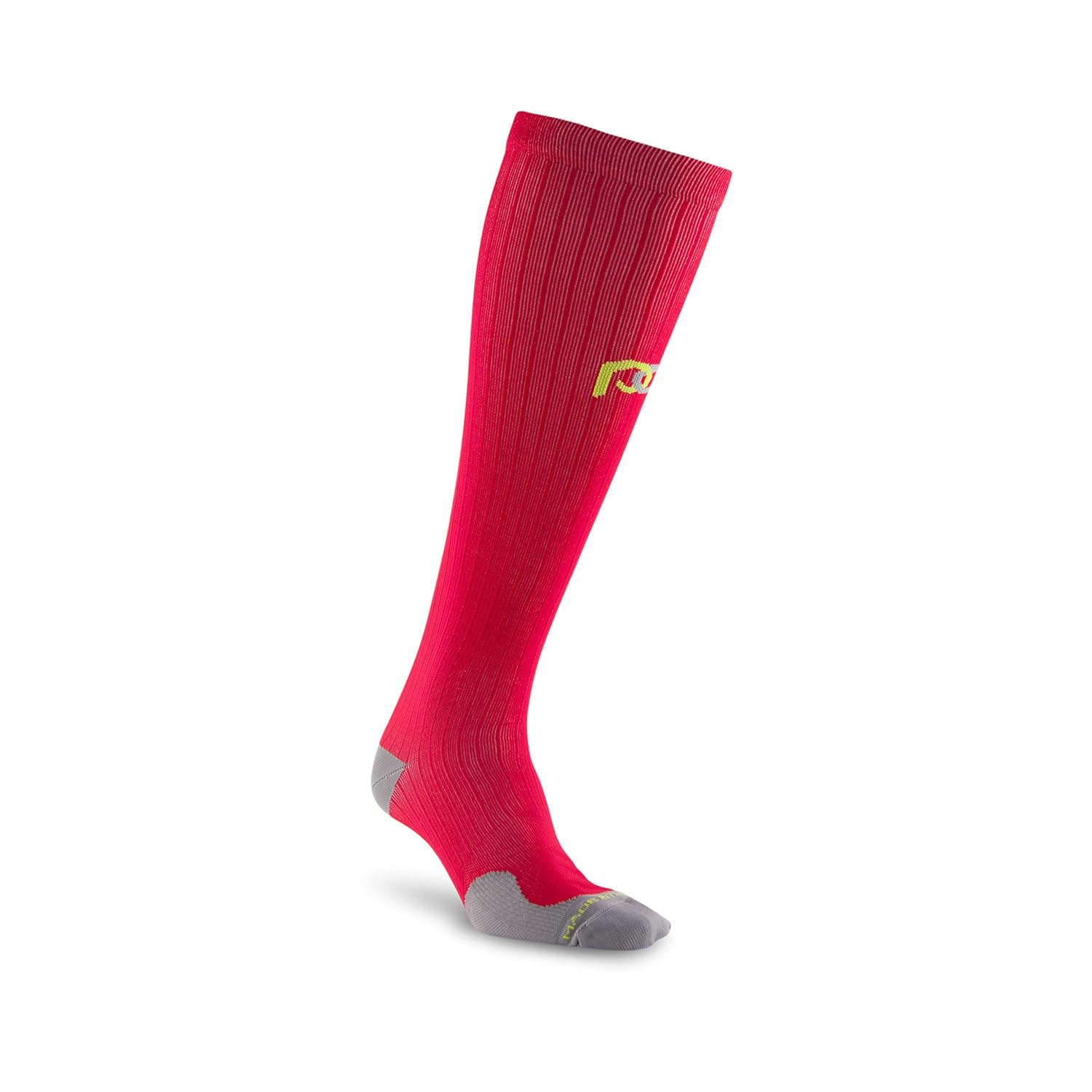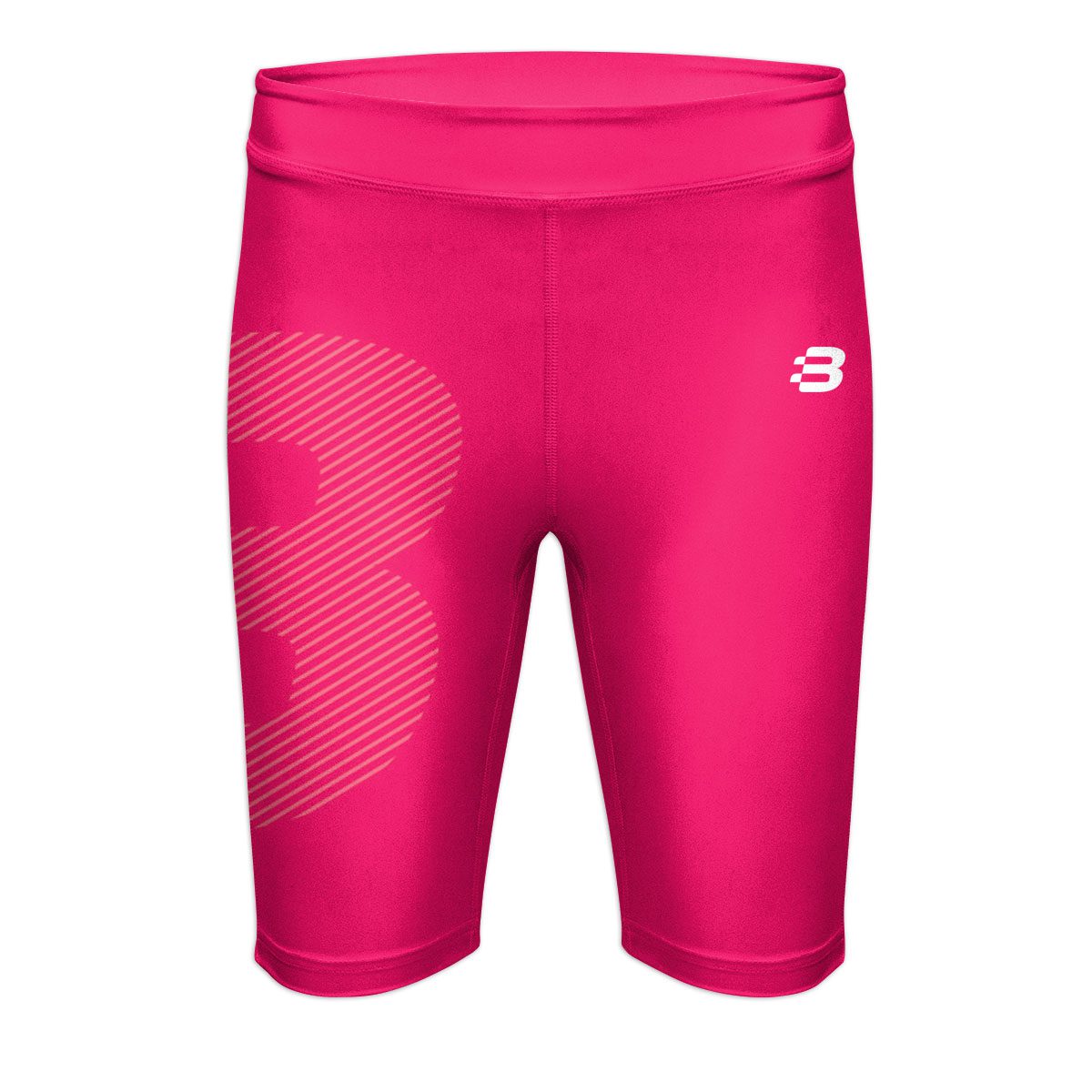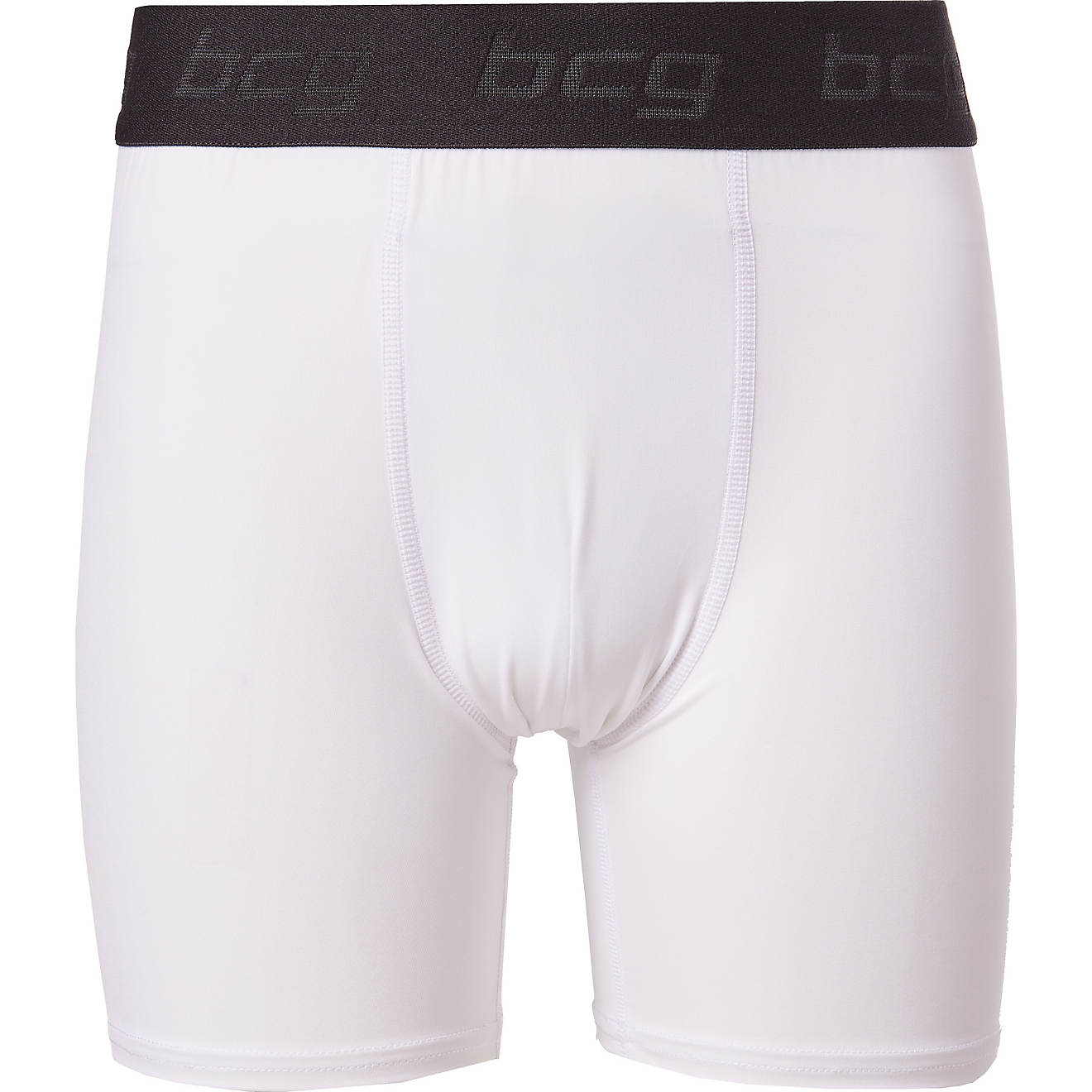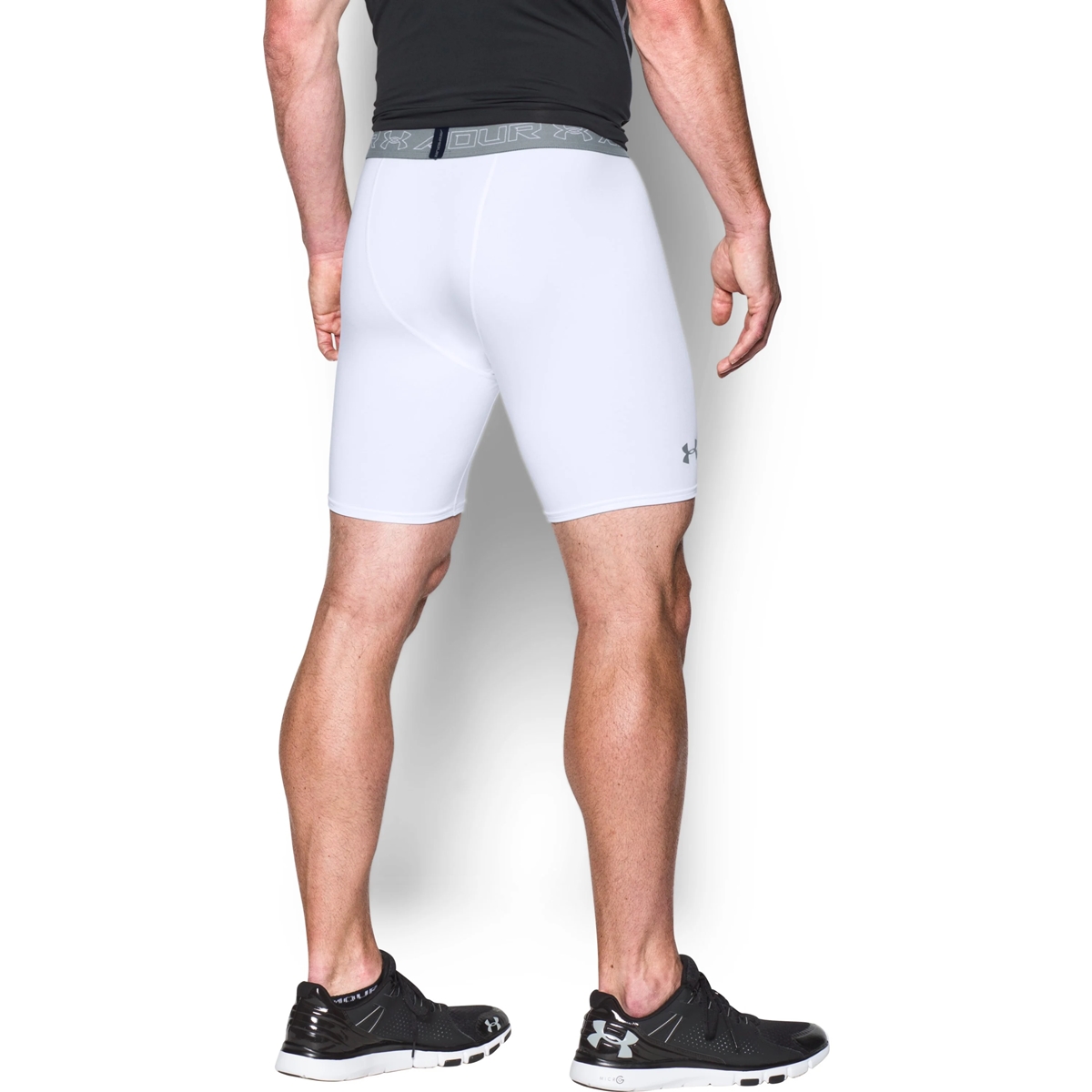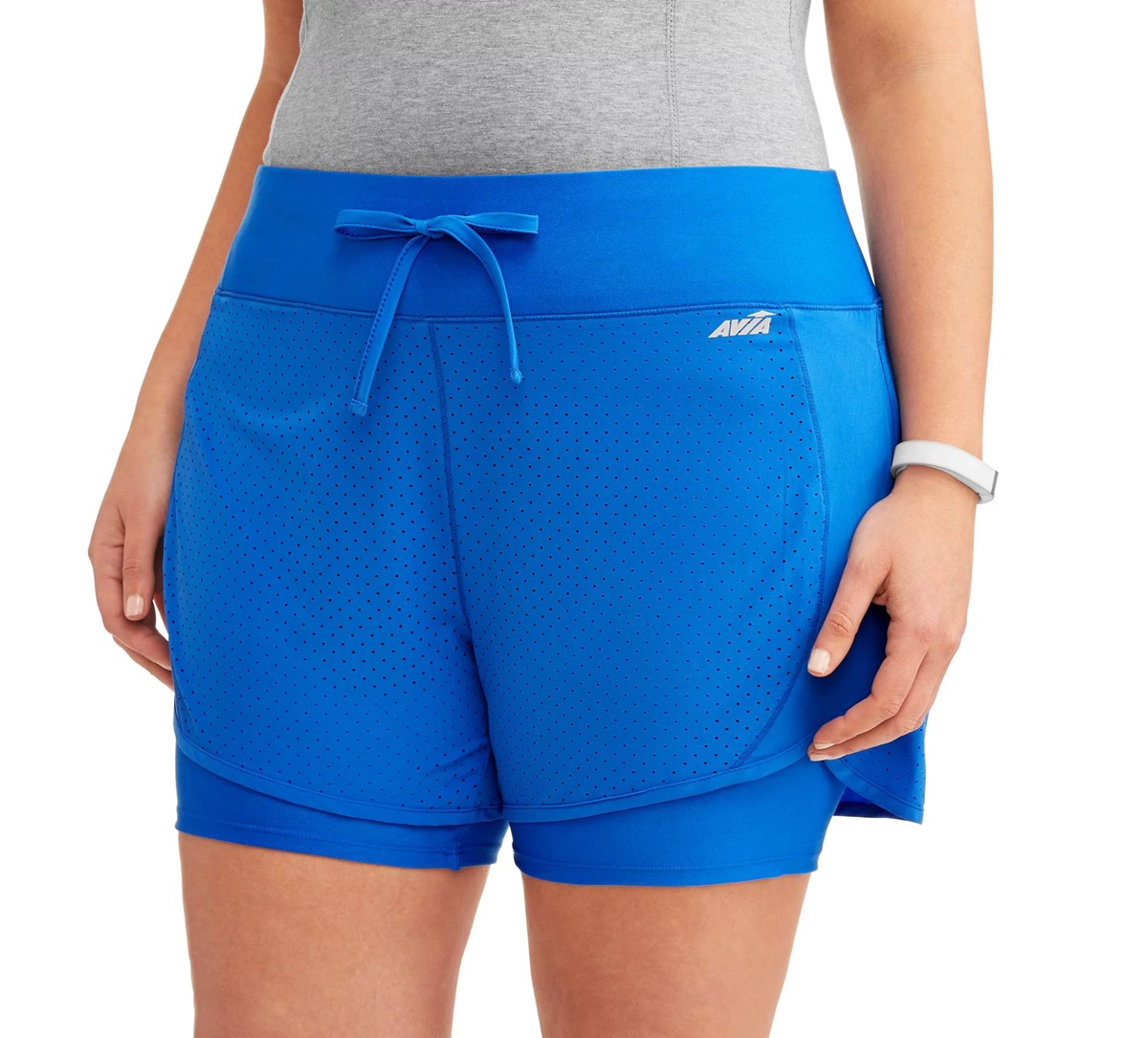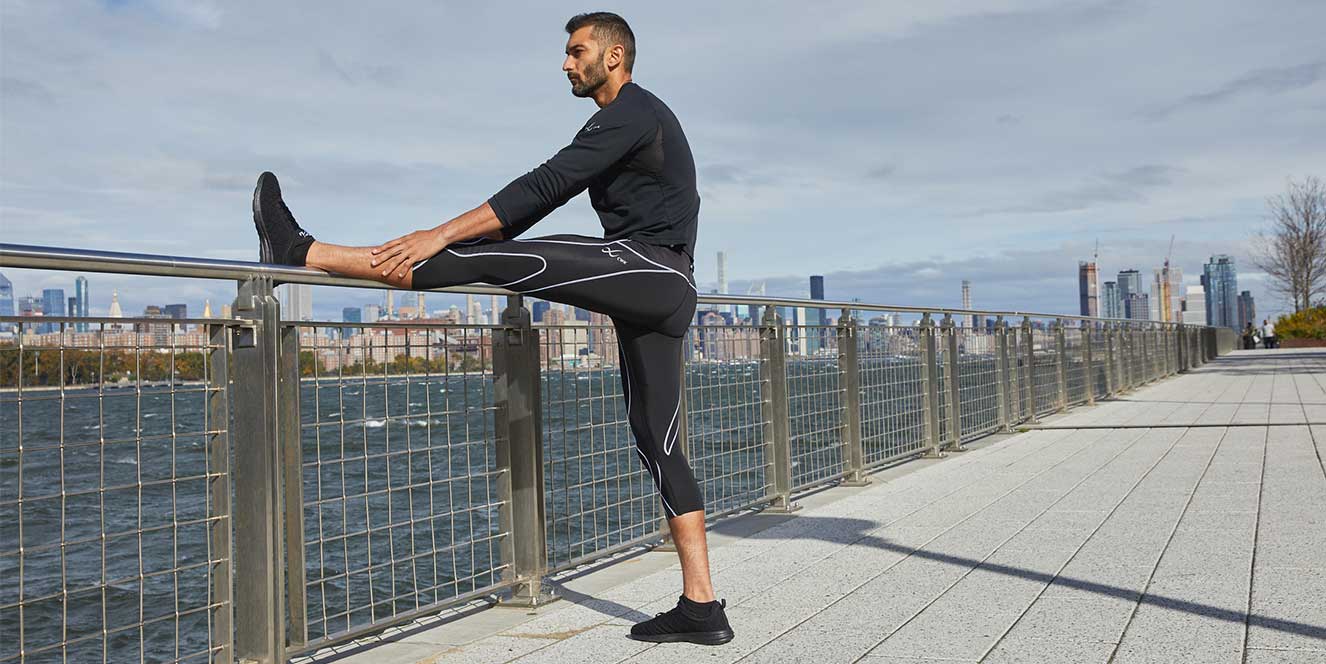

Types
What Is Compression Athletic Wear
Modified: August 22, 2023
Discover the different types of compression athletic wear that can help enhance your performance and accelerate recovery. Find out which type suits your needs best.
Introduction
Welcome to the world of compression athletic wear! Whether you’re a professional athlete, a fitness enthusiast, or simply someone looking for comfortable and functional workout gear, compression athletic wear is a game-changer. This specialized clothing has gained popularity in recent years, not only for its sleek and stylish appearance but also for its numerous benefits.
If you’ve ever wondered what compression athletic wear is all about, you’ve come to the right place. In this article, we will explore the definition, benefits, functionality, popular brands, and different types of compression athletic wear. We will also provide tips on choosing the right gear and caring for it properly. By the end of this article, you’ll have a comprehensive understanding of compression athletic wear and how it can enhance your performance and overall fitness journey.
Compression athletic wear refers to tight-fitting garments made from stretchy materials such as spandex, nylon, or polyester. These garments are designed to provide a gentle and constant pressure to specific muscle groups during physical activity. The idea behind compression wear is to improve blood circulation, reduce muscle fatigue, enhance performance, and aid in post-workout recovery.
So, what sets compression athletic wear apart from regular workout clothing? The key lies in its tight yet supportive fit. Unlike loose-fitting attire that can hinder movement and cause discomfort, compression wear conforms to your body, providing a second-skin feel. The compression applies pressure to your muscles, which promotes blood flow and stabilizes the targeted areas, resulting in improved performance and reduced muscle soreness.
Additionally, compression athletic wear offers a range of benefits beyond just muscle support. It can help regulate body temperature and wick away moisture, keeping you dry and comfortable during intense workouts. The compressive nature of the garments also provides a slimming effect, giving you a streamlined appearance while accentuating your physique.
While compression athletic wear was initially popular among athletes and professional sports teams, its appeal has now expanded to all kinds of fitness enthusiasts. Whether you’re into running, cycling, weightlifting, or yoga, there is a wide array of compression gear available to suit your specific needs and preferences.
So, if you’re ready to take your workout gear to the next level, join us as we delve into the world of compression athletic wear, uncovering its benefits, functionalities, and how to choose the perfect garments for your fitness goals.
Definition of Compression Athletic Wear
Compression athletic wear, also known as compression gear or compression clothing, is a specialized type of clothing designed to enhance performance, aid in recovery, and promote overall comfort during physical activity. It is typically made from stretchy fabrics such as spandex, nylon, or polyester, which provide a tight yet flexible fit.
The main feature of compression athletic wear is the application of graduated pressure to specific muscle groups. This pressure helps to improve blood circulation, increase oxygen delivery to the muscles, and reduce muscle vibration. By stabilizing and supporting the muscles, compression garments can enhance athletic performance and reduce the risk of muscle strain or injury.
Compression athletic wear is available in various forms, including shirts, shorts, leggings, socks, sleeves, and even full-body suits. These garments are designed to fit snugly against the body, providing a compression gradient that is tighter at the extremities and gradually loosens as it moves towards the core. This design ensures that the maximum pressure is applied to the muscles, while still allowing for adequate movement and flexibility.
One of the key benefits of compression athletic wear is its ability to regulate body temperature. The fabrics used in these garments are often moisture-wicking, meaning they draw sweat away from the body and allow it to evaporate quickly. This helps to keep you cool and dry during intense workouts, preventing discomfort and chafing.
Furthermore, compression athletic wear offers additional features such as UV protection, odor resistance, and anti-bacterial properties, ensuring optimal comfort and hygiene during prolonged physical activity.
It is important to note that compression athletic wear should not be confused with regular athletic wear. While both types of clothing are designed for sports and exercise, compression gear provides specific benefits and functionality that go beyond typical workout attire. The compression aspect sets it apart, making it a popular choice among athletes, fitness enthusiasts, and active individuals of all levels.
In the following sections, we will explore the many benefits of compression athletic wear, how it works, and the different types and brands available on the market. So, let’s delve into the world of compression gear and discover how it can elevate your athletic performance and enhance your fitness journey!
Benefits of Compression Athletic Wear
Compression athletic wear offers a multitude of benefits for athletes, fitness enthusiasts, and anyone seeking comfortable and functional workout gear. Let’s explore some of the key advantages:
- Enhanced Performance: Compression garments are designed to improve blood circulation and oxygen delivery to the muscles. This increased blood flow can enhance athletic performance, allowing you to work at a higher intensity for longer durations. By reducing muscle fatigue and promoting efficient muscle function, compression wear can help you achieve your workout goals.
- Reduced Muscle Soreness: The graduated compression applied by these garments helps alleviate muscle vibration and damage during exercise, which can lead to reduced muscle soreness and faster recovery post-workout. By providing support and minimizing muscle oscillation, compression wear can help you bounce back quicker and get back to your training routine.
- Improved Muscle Stability: Compression clothing supports the muscles and helps stabilize them, reducing the risk of muscle strain or injury during physical activity. By providing a snug fit and gentle compression, these garments help align the muscles and keep them in optimal positioning, ensuring proper movement and reducing the risk of misalignment.
- Regulation of Body Temperature: Many compression garments are made from moisture-wicking fabrics that draw sweat away from the body. This helps regulate body temperature by keeping you cool and dry during intense workouts. Additionally, some compression wear offers thermal properties, helping to insulate your body in colder temperatures and keeping you comfortably warm.
- Supports Joint Stability: Compression athletic wear can also provide support to joints, such as the knees, ankles, and elbows. The compression helps increase proprioception, or awareness of body position, which can improve stability and reduce the risk of joint-related injuries. This is especially beneficial for activities involving repetitive movements or high-impact exercises.
- Enhanced Recovery: Compression garments are not only beneficial during workouts but also aid in the recovery process. The increased blood circulation and reduced swelling provided by compression wear can help flush out metabolic waste and deliver essential nutrients to the muscles, facilitating faster recovery and reducing downtime between training sessions.
These are just some of the many benefits that compression athletic wear can offer. Whether you’re looking to improve performance, reduce muscle soreness, or enhance recovery, incorporating compression gear into your workout routine can make a significant difference in your overall fitness journey.
In the next section, we will dive into the science behind how compression athletic wear works, shedding light on the mechanisms that contribute to its effectiveness.
How Compression Athletic Wear Works
Compression athletic wear works by applying pressure to specific muscle groups, enhancing blood circulation, and providing support to the muscles and joints. Let’s take a closer look at how these garments work:
Improved Blood Circulation: Compression gear applies graduated pressure, meaning it is tighter at the extremities and gradually loosens as it moves towards the core. This compression helps to stimulate blood flow, pushing oxygen-rich blood towards the muscles. Improved blood circulation facilitates the delivery of nutrients and oxygen to the muscles, aiding in their performance and recovery.
Reduced Muscle Vibration: During physical activity, muscles can experience micro-tears and vibrational forces. Compression athletic wear helps to minimize muscle oscillation or vibration, thereby reducing muscle damage and fatigue. The gentle pressure exerted by the clothing supports the muscles, allowing them to work more efficiently and effectively.
Stabilization of Muscles and Joints: Compression garments provide support to the muscles and joints, helping to stabilize them during exercise. This support helps to reduce the risk of muscle strain or injury by keeping the muscles aligned and in optimal positioning. The compression also enhances proprioception, or body awareness, which further aids in joint stability.
Enhanced Warm-Up and Recovery: The applied pressure from compression wear assists in warming up the muscles and preparing them for physical activity. The increased blood flow helps to loosen and activate the muscles, minimizing the risk of injury. Additionally, after a workout, compression garments aid in the recovery process by reducing muscle soreness and inflammation. The compression promotes the removal of waste products and improves nutrient delivery to the muscles, facilitating faster recovery.
Regulation of Body Temperature: Many compression garments are made from moisture-wicking materials that draw sweat away from the body. This helps regulate body temperature by keeping you cool and dry during intense workouts. Some compression clothing also offers thermal properties, which help retain heat in colder temperatures, keeping your muscles warm and flexible.
It’s important to note that while compression athletic wear offers numerous benefits, it is not a magical solution for all performance-related issues. It should be used in conjunction with proper training, nutrition, and recovery practices to maximize its effectiveness. Compression gear acts as a supportive tool to optimize your performance and enhance your overall fitness journey.
Now that we understand how compression athletic wear works, let’s explore some popular brands that offer high-quality compression garments in the next section.
Popular Brands of Compression Athletic Wear
When it comes to compression athletic wear, there are several reputable brands known for producing high-quality garments that combine functionality, comfort, and style. Let’s take a look at some popular brands that offer a wide range of compression gear:
- Nike: Nike, a global leader in athletic apparel, offers a diverse collection of compression clothing for both men and women. Known for their innovative designs and cutting-edge technology, Nike compression garments provide optimal support, moisture-wicking properties, and a sleek fit.
- Under Armour: Under Armour is renowned for its compression apparel designed to enhance performance and aid in recovery. Their compression wear features strategic ventilation, quick-drying fabrics, and ergonomic construction, making it a popular choice among athletes of all levels.
- 2XU: 2XU (pronounced “two times you”) is an Australian brand that specializes in high-performance compression garments. Trusted by elite athletes, 2XU compression wear is known for its graduated compression technology, advanced fabrics, and exceptional muscle support.
- Skins: Skins is a well-established compression wear brand that focuses on optimizing athletic performance through their innovative compression technology. Skins garments offer targeted compression, moisture management, and UV protection, making them a popular choice for various sports and activities.
- CompressionZ: CompressionZ is a brand that specifically caters to compression athletic wear. They offer a wide range of compression gear for men and women, including shirts, shorts, leggings, and sleeves. CompressionZ garments are known for their affordability, durability, and effective compression technology.
- Reebok: Reebok is a trusted name in the fitness industry, and their compression athletic wear is no exception. With a focus on performance, Reebok compression garments provide targeted compression, moisture-wicking properties, and a comfortable fit for athletes of all disciplines.
These are just a few examples of the many popular brands that offer compression athletic wear. When choosing a brand, consider factors such as your specific needs, budget, and personal preferences. It is also beneficial to read reviews and testimonials from other athletes to gauge the quality and effectiveness of the compression gear.
In the next section, we will explore the different types of compression athletic wear available, allowing you to choose the right garments for your workout routine.
Different Types of Compression Athletic Wear
Compression athletic wear comes in a variety of forms, each designed to target specific muscle groups and provide optimal support and functionality during physical activity. Here are some different types of compression gear you may come across:
- Compression Tops: Compression tops, such as shirts or tanks, are designed to provide compression and support to the upper body. They target the chest, back, shoulders, and arms, and are commonly used in activities like weightlifting, running, and team sports.
- Compression Bottoms: Compression bottoms, like shorts or leggings, offer support to the lower body, including the hips, glutes, thighs, and calves. They are popular for activities such as running, cycling, and CrossFit, where optimal muscle support and protection are crucial.
- Compression Socks and Sleeves: Compression socks and sleeves are mainly used to provide targeted compression to specific areas, such as the calves or wrists. They are commonly worn during activities that involve repetitive movements, such as running, hiking, or basketball. Compression socks also aid in blood circulation and can help reduce muscle fatigue and swelling.
- Compression Shorts and Leggings: Compression shorts and leggings are designed to offer comprehensive lower body support. These garments provide compression to the hips, thighs, and glutes, helping stabilize the muscles and reduce muscle oscillation. They are popular among athletes participating in various sports, including soccer, basketball, and track and field.
- Full-Body Compression Suits: Full-body compression suits, also known as onesies, provide compression to the entire body. These garments are often used in sports that require full-body movement, such as gymnastics or martial arts. Full-body suits offer comprehensive muscle support, improve blood circulation, and aid in recovery.
- Compression Accessories: In addition to the main compression garments, there are various compression accessories available, such as compression arm sleeves, knee braces, ankle braces, and elbow supports. These accessories provide targeted compression and support to specific joints or areas of the body, enhancing stability and reducing the risk of injury.
It’s important to choose the right type of compression gear based on your specific needs, preferences, and the activities you engage in. Consider the targeted muscle groups and the level of compression required for optimal performance and comfort.
Now that we’ve explored the different types of compression athletic wear, let’s move on to the next section, where we’ll discuss factors to consider when choosing the right compression garments for your fitness journey.
Choosing the Right Compression Athletic Wear
When it comes to selecting compression athletic wear, it’s important to consider several factors to ensure you choose the right garments for your specific needs and preferences. Here are some key factors to keep in mind when making your selection:
- Compression Level: Compression garments come in different compression levels, ranging from mild to firm. The level of compression you choose depends on your individual preferences and the specific activities you engage in. Generally, higher compression levels are recommended for intense workouts or recovery, while milder compression may be suitable for everyday wear or lighter activities.
- Fabric Quality: The quality of the fabric used in compression athletic wear is crucial for both comfort and durability. Look for garments made from moisture-wicking materials that keep you dry and regulate body temperature. Additionally, consider materials that are breathable, stretchy, and resistant to wear and tear.
- Fit and Size: Proper fit is essential for effective compression wear. Be sure to measure yourself accurately and consult the manufacturer’s size chart to determine the right size for you. The garments should fit snugly without being uncomfortably tight or restricting movement. Pay attention to the length, waistband, and overall design to ensure a comfortable and secure fit.
- Targeted Muscle Support: Different sports and activities require targeted muscle support. Consider the specific muscle groups you want to prioritize and choose compression garments with appropriate paneling or design to provide optimal support to those areas. For example, activities that involve repetitive jumping may require additional support around the knees, while upper body-focused activities may benefit from compression tops that provide shoulder and arm support.
- Brand Reputation: Look for reputable brands known for their quality and performance in compression athletic wear. Research customer reviews and feedback to gauge the satisfaction of other athletes. Established brands often invest in research and development, ensuring their compression gear meets high standards of functionality, durability, and comfort.
- Price and Budget: Compression athletic wear can range in price, so it’s important to consider your budget when making a choice. While affordability might be a deciding factor for some, remember that investing in high-quality compression gear can provide better durability, performance, and overall value in the long run.
By considering these factors, you can make an informed decision when choosing the right compression athletic wear for your specific needs and fitness goals. Remember that finding the perfect compression gear may require some trial and error, so don’t be afraid to try different brands and styles to find what works best for you.
In the next section, we will offer some practical tips on how to care for your compression athletic wear to ensure its longevity and functionality.
Tips for Caring for Compression Athletic Wear
Proper care and maintenance of your compression athletic wear are essential to prolong its longevity and functionality. Here are some practical tips to help you keep your compression gear in optimal condition:
- Follow Washing Instructions: Always check the washing instructions provided by the manufacturer. Most compression garments can be machine washed, but it’s important to use a gentle cycle and cold water to prevent damage to the fabric.
- Avoid Harsh Detergents: Use mild, non-abrasive detergents that are specifically designed for activewear. Avoid using fabric softeners, bleach, or harsh chemicals, as they can degrade the fabric and affect the elasticity of the compression gear.
- Air-dry Instead of Tumble Drying: It’s best to air-dry your compression athletic wear to maintain its shape and elasticity. Avoid using a dryer or exposing it to direct heat as high temperatures can damage the fabric and compromise the compression properties.
- Store Properly: After washing, make sure to store your compression gear correctly. Avoid folding or twisting the garments, as this can cause stretching or misshaping. Instead, lay them flat or hang them up to maintain their form.
- Rotate Your Compression Gear: To prolong the life of your compression wear, it’s recommended to have multiple sets of garments that you can rotate during your training sessions. This allows time for proper cleaning and drying, preventing excessive wear and tear.
- Be Mindful of Velcro and Sharp Objects: Be cautious when wearing compression gear alongside items with Velcro straps or sharp objects. Velcro can easily snag the fabric and cause it to fray, while sharp objects can puncture or tear the compression clothing.
- Replace When Needed: Compression garments, like any other sports apparel, will eventually wear out over time. If you notice excessive stretching, loss of elasticity, or visible signs of wear and tear, it may be time to replace the items to ensure maximum functionality and support.
By following these care tips, you can extend the lifespan of your compression athletic wear and maintain its functionality, ensuring that it continues to provide the support and compression you rely on during your workouts.
Now that you know how to care for your compression gear, let’s explore some potential drawbacks to consider when using compression athletic wear in the next section.
Potential Drawbacks of Compression Athletic Wear
While compression athletic wear offers numerous benefits, it’s important to be aware of some potential drawbacks associated with its use. Here are a few considerations:
- Discomfort: Some individuals may find compression gear uncomfortable, especially if it is worn for extended periods or if the fit is too tight. The level of compression that works for one person may not be suitable for another. It’s essential to find the right balance between support and comfort.
- Restricted Movement: The tightness of compression garments can limit range of motion, particularly if the fit is too restrictive or the wrong size is worn. It’s crucial to choose the correct size and style of compression wear that allows for proper movement and flexibility during exercise.
- Overheating: Compression garments that are not made from breathable or moisture-wicking fabrics may cause overheating and discomfort during intense workouts. It’s important to choose compression wear that is designed to regulate body temperature and effectively manage moisture to prevent overheating and excessive sweating.
- Dependency: Some individuals may become reliant on compression gear and feel that they cannot perform optimally without it. While compression wear can provide support and enhance performance, it’s crucial not to rely solely on these garments. Focus on developing strength, flexibility, and proper training techniques to avoid becoming dependent on the external support provided by compression athletic wear.
- Cost: High-quality compression gear can come with a higher price tag compared to regular workout clothing. It’s important to consider your budget when investing in compression wear and ensure you’re making an informed decision based on your needs and priorities.
- Individual Variations: It’s important to remember that individual responses to compression wear can vary. What works well for one person may not have the same impact on another. It may require some experimentation to find the right type and level of compression that suits your unique physiology and preferences.
It’s crucial to listen to your body and make adjustments as needed when using compression athletic wear. If you experience any discomfort or negative effects from wearing compression gear, it’s advisable to consult with a healthcare professional or adjust your usage accordingly.
Now that we’ve explored potential drawbacks, let’s wrap up this article with a summary of the key points discussed throughout.
Conclusion
Compression athletic wear is a game-changer in the world of fitness and sports. This specialized clothing, made from stretchy and supportive materials, provides numerous benefits for athletes, fitness enthusiasts, and anyone looking to enhance their workout performance. By applying graduated pressure to specific muscle groups, compression gear improves blood circulation, reduces muscle vibration, enhances muscle stability, and aids in post-workout recovery.
There are various types of compression athletic wear available, including tops, bottoms, socks, sleeves, and full-body suits, each targeting different areas of the body. Popular brands like Nike, Under Armour, 2XU, Skins, CompressionZ, and Reebok offer high-quality compression gear that combines functionality, comfort, and style. When choosing compression wear, factors such as compression level, fabric quality, fit and size, targeted muscle support, brand reputation, and budget should be considered.
While compression gear offers a range of benefits, including enhanced performance, reduced muscle soreness, improved muscle stability, regulation of body temperature, enhanced recovery, and joint support, there are potential drawbacks to be aware of. Discomfort, restricted movement, overheating, dependency, cost, and individual variations are aspects that should be taken into account when using compression athletic wear.
To ensure the longevity and functionality of your compression gear, it’s important to follow proper care procedures, such as following washing instructions, avoiding harsh detergents, air-drying instead of tumble drying, and storing the garments properly. By caring for your compression athletic wear, you can maximize its effectiveness and longevity.
In conclusion, compression athletic wear is a valuable addition to any fitness routine. By understanding its benefits, selecting the right gear, and caring for it properly, you can experience enhanced performance, improved recovery, and increased comfort during your workouts. So, lace up those compression socks, slip into that compression top, and get ready to optimize your fitness journey with the power of compression athletic wear!

